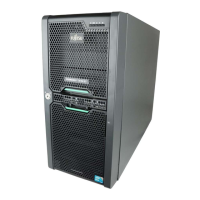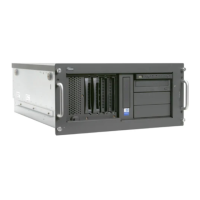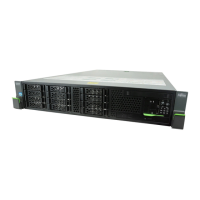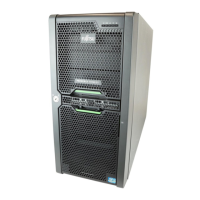TX150 S8 / TX200 S7
Upgrade and Maintenance Manual 49
Basic hardware procedures
4.1.3 Locating the defective component
After determining the error class by the CSS or Global Error indicators (see
section "Determining the error class" on page 48) local diagnostic indicators on
the front panel and system board allow you to identify the defective component.
I For further information, refer to the "ServerView Suite Local Service
Concept (LSC)" manual.
4.1.3.1 Local diagnostic indicators on the front
Ê Check the CSS indicator on the front and connector panels of the server:
I In addition to local diagnostic indicators, CSS or Global Error LEDs
indicate, if the defective component is a customer or field replaceable
unit (see section "Determining the error class" on page 48).
4.1.3.2 Local diagnostic indicators on the system board
Using the Indicate CSS button
Ê Shut down and power off the server.
Ê Disconnect the AC power cord from the system.
I It is mandatory to disconnect power cords in order to use the Indicate
CSS functionality.
Ê Press the Indicate CSS button to highlight defective components (see
section "Onboard indicators and controls" on page 421 ).
I In addition to local diagnostic indicators, CSS or Global Error LEDs
indicate, if the defective component is a customer replaceable unit or if a
service technician needs to be dispatched to replace the part (see
section "Determining the error class" on page 48).
If the system has been powered off to replace a non hot-plug unit, a
system of PRIMERGY diagnostics indicators guides you to the faulty
component.
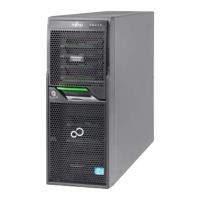
